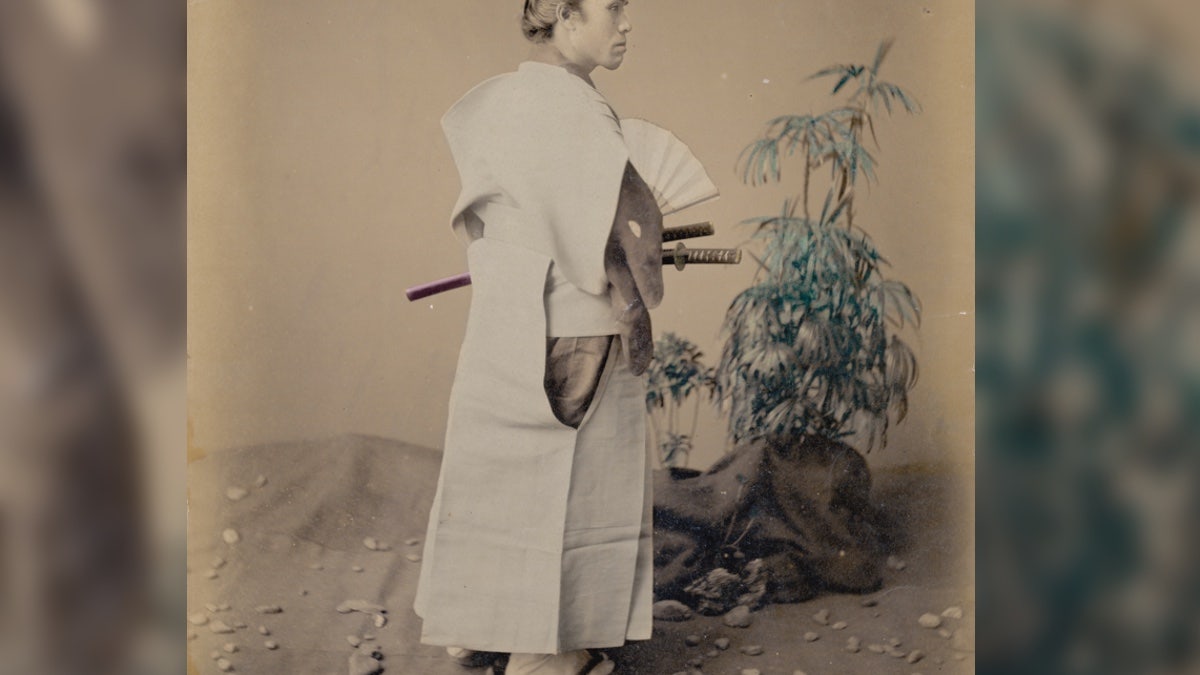
A Japanese samurai warrior, around 1880. (Photo by Hulton Archive/Getty Images)
A newly translated samurai text called "Twelve Rules of the Sword" reveals the secrets of a sword-fighting school that mastered a technique that seemed to give supernatural powers.
Dating back to the 17th century, the text contains knowledge passed down from a samurai named Itō Ittōsai (born around 1560), who fought and won 33 duels in Japan. Researchers aren't sure when he died, but historical records suggest he may have lived to be over age 90. Ittōsai never wrote down his "Twelve Rules of the Sword," and instead passed them on orally to his students at the One Cut sword-fighting school. The descendants of his students later recorded them in writing.
The text describes rules for beating an opponent as well as two magical prayers to enhance a samurai's spirit and mind, according to Eric Shahan, who recently translated the text. Shahan is a Japanese translator who specializes in translating Japanese martial-arts texts. He also holds a San Dan (third-degree black belt) in Kobudō, a Japanese martial art. [In Photos: The Last Century of Samurai Swordsmen]
The two magical prayers are vague and hard to understand. One of them states that a samurai should draw several Sanskrit characters on their palms, including a character that represents Oni, a type of demon. The samurai then joins their palms together, says a prayer, and rotates their hands one time while making a loud "Un!" sound, before clapping their hands once and rubbing them together, the prayer indicates.
More From LiveScience
Observing with your spirit
One of the rules in the text is called "eyes of the heart"; it says, in Shahan's translation, that "you should not look at your opponent with your eyes, but view them with your spirit … If you look with your eyes you may get distracted, however by looking with your mind you remain focused." Two magical prayers that may have helped samurai of the One Cut school to view opponents with their "spirit" and "mind" were also translated into English in the text.
People living in 17th-century Japan who saw a samurai who had mastered the "eyes of the heart" rule may have been stunned. "At the time, it may have seemed to an observer that someone who had mastered this technique had supernatural powers," Shahan said. However, there is a scientific explanation for how they used their "mind" and "spirit," rather than eyes, to watch their opponent. [Photos: 19th-Century Martial Arts for Cops]
According to Shahan, "[The] explanation is you react faster to things moving in your peripheral vision as opposed to your center of focus. Looking directly at an opponent's sword, consciously registering a movement and then trying to respond will not end well for you in a sword duel."
Shahan added, "Conversely, allowing your opponent to be in your field of vision without focusing on any one part allows your peripheral vision to react to any movement or attack," and "you will react faster than you could by staring directly at the enemy."
The magical prayers in the text were likely some type of self-hypnosis or meditation ritual: "If your mind is in a jumble before battle, defeat would be certain. There could certainly be a connection to the eyes of the heart in the sense that you need to allow your body to react freely and unconsciously to the opponent's attack," Shahan said.
Heart of the fox
Another rule, called "heart of the fox," warns samurai against being overly cautious. The rule notes that foxes are cautious and suspicious by nature, something that can get them killed. "Instead of fleeing in one direction, they stop here and there checking what is behind them. During one of these delays, the hunter circles around and kills the fox. The lesson here is that an excess of caution lead to the fox's downfall," the rule states.
If a samurai thinks about what they should do and hesitates, "the opponent will choose that moment to strike" according to that rule. "Therefore, it is essential that you remove all doubt from your technique. You must vigorously train yourself so that you are empty, the void."
The other rules include "pine tree in the wind," which teaches samurai not to get trapped by the opponents' rhythm, but to use no rhythm at all. Another, called "cutting down," involves achieving split-second timing and "preventing extraneous thoughts."
Shahan said that samurai who learned the One Cut school of sword-fighting techniques "trained all their lives in the sword arts so the techniques were ingrained into their bodies; they needed the mental fortitude to allow their body to respond without their mind second guessing the situation."
- Photos: 1914 Martial Arts Book for Women in Japan
- Image Gallery: Combat Sports in Ancient Rome
- In Photos: China's Terracotta Warriors Inspired by Greek Art
Originally published on Live Science.




















